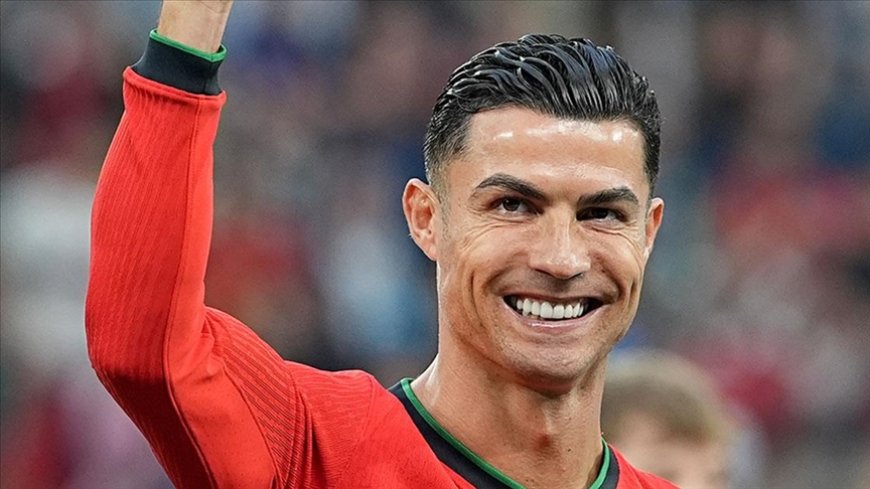Ronaldo’s 100-Goal Milestone: What U.S. Soccer Can Learn for Youth Development
Cristiano Ronaldo’s 100-goal milestone offers key lessons for U.S. soccer youth programs. A cross-cultural analysis comparing MLS academies with Europe.

Cristiano Ronaldo’s latest achievement — becoming the first player in history to score 100 goals for four different clubs — is more than just a personal triumph. It is a living case study in discipline, adaptability, and consistent excellence. But beyond the headlines, Ronaldo’s journey also offers lessons for a nation still searching for its soccer identity: the United States.
While Major League Soccer (MLS) continues to expand its influence, American youth soccer still trails behind Europe in producing global superstars. The question now is: can U.S. academies learn from the system that helped mold Ronaldo into a record-shattering athlete?
Ronaldo’s Path: A Blueprint of Excellence
Ronaldo’s rise began in Sporting CP’s academy in Portugal, where rigorous technical training and competitive exposure shaped his early years. Unlike many American players who rely on pay-to-play structures, Ronaldo benefited from a European model emphasizing accessibility, meritocracy, and tactical schooling from a young age.
After Sporting, his move to Manchester United gave him exposure to the English Premier League’s intensity. At Real Madrid, his scoring exploded — 450 goals in 438 appearances — cementing his place as one of the greatest in the sport. Juventus and Al-Nassr followed, each adding another century of goals to his tally.
Ronaldo’s development was no accident. It was the result of structured academies, elite coaching, and relentless competition — factors U.S. soccer is still working to replicate.
The American Gap: MLS Academies vs. Europe
Major League Soccer academies, launched in the late 2000s, were designed to end reliance on expensive club soccer. But progress has been uneven. According to U.S. Soccer data, more than 70% of professional American players still pass through pay-to-play programs before reaching higher levels. By comparison, in Europe, elite academies are directly funded by clubs and federations, removing financial barriers.
Coaches interviewed for this story pointed to two structural challenges in the U.S. model:
-
Accessibility and Cost – “Talented kids are still slipping through the cracks,” said Miguel Rojas, an academy coach in Texas. “In Portugal or Spain, if you’re good, you’re in the system by 12 or 13. Here, families pay thousands of dollars just to stay competitive.”
-
Competitive Culture – European prospects play against the best regularly, while U.S. academies often lack consistent high-level competition. “MLS NEXT is improving this, but it’s still years away from matching the week-in, week-out battles you see in Europe,” added Rojas.
The results are visible. While Christian Pulisic, Weston McKennie, and Gio Reyna have broken into Europe’s top leagues, the pipeline remains inconsistent compared to Portugal, France, or Germany.
Lessons from Ronaldo for U.S. Youth Programs
-
Early Technical Immersion
Ronaldo’s career underlines the importance of technical mastery at an early age. American academies are expanding futsal and small-sided play, but the emphasis on athleticism sometimes overshadows skill refinement. -
Holistic Athlete Development
Ronaldo’s training focused not just on footwork but also on nutrition, fitness, and mental toughness. U.S. academies are beginning to adopt similar approaches, integrating sports science and psychology into programs. -
Pathway to Professionalism
European clubs provide a seamless transition from academy to senior team. In the U.S., U.S. Soccer has supported MLS clubs in experimenting with “homegrown” contracts, but many prospects still choose college, delaying exposure to professional environments. -
Global Mentality
Ronaldo’s hunger was sharpened by competing in multiple countries. U.S. players often stay domestic too long. Greater exchange programs, overseas loans, and partnerships could broaden the competitive edge for American youth.
A Turning Point for American Soccer?
The United States has the infrastructure and growing fanbase to make soccer a mainstream powerhouse. The 2026 FIFA World Cup, jointly hosted by the U.S., Canada, and Mexico, is expected to accelerate youth interest. But without structural reform, the gap between MLS academies and Europe’s production line will remain.
“Ronaldo didn’t become Ronaldo by accident,” said James Porter, a former U.S. youth coach now working in Spain. “It was a system that shaped him. The U.S. has the talent — the challenge is building the same kind of system.”
Looking Ahead
For young American athletes, Ronaldo’s 100-goal milestone is not just a distant record; it is a reminder of what consistent training, resilience, and opportunity can achieve. As U.S. soccer programs continue to evolve, borrowing lessons from Europe while creating uniquely American pathways may hold the key to developing the next global superstar.
The dream is clear: to one day see an American forward celebrated worldwide the way Ronaldo is today.











